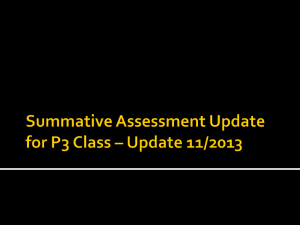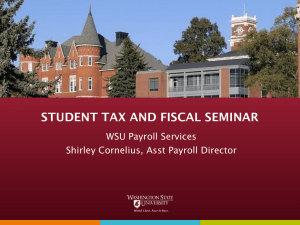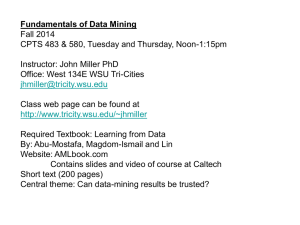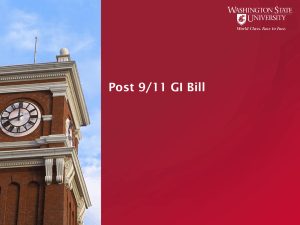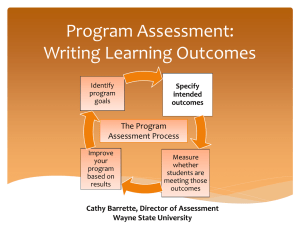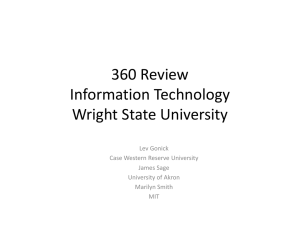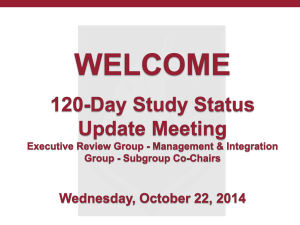Mark M. Polatajko, CPA Candidate Public Forum September 22, 2011
advertisement
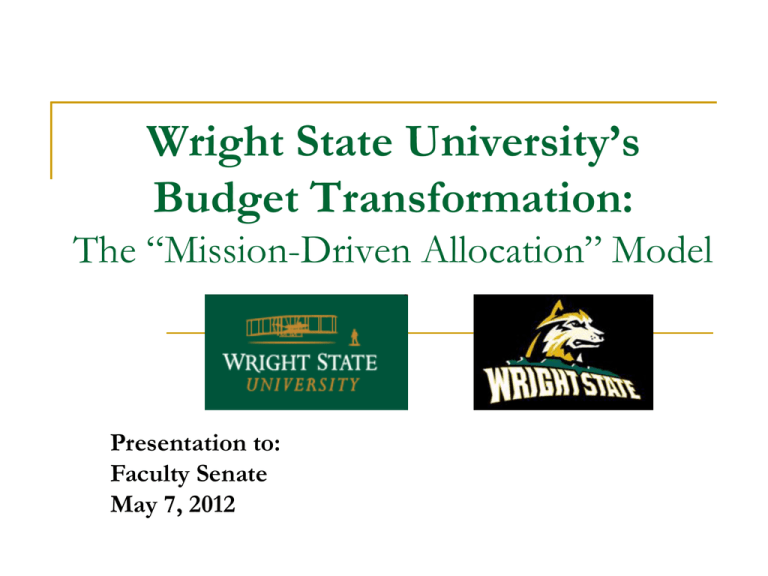
Wright State University’s Budget Transformation: The “Mission-Driven Allocation” Model Presentation to: Faculty Senate May 7, 2012 Agenda Introduction WSU Budget - Current State The Changing Environment WSU “Mission-Driven Allocation” Model (MDA) WSU MDA Model Design The Path Forward Concluding Thoughts and Discussion WSU Budget Transformation May 7, 2012 2 WSU Budget: Current State Traditional Base Budget Approach Centrally Funded Incremental Adjustments Compensation Changes Inflationary Adjustments Technology Initiatives Centrally Funded Allocations Strategic Initiatives Capital Projects WSU Budget Transformation May 7, 2012 3 The Changing Environment WSU must transform its budget development and management process to respond to this dynamic environment: Drive student success Expand programs and scholarship Offset diminishing revenue streams Catalyze entrepreneurship Optimize expenses and drive efficiency Respond to community needs WSU Budget Transformation May 7, 2012 4 WSU “Mission-Driven Allocation” Model (MDA) As a result, WSU is developing the “Mission-Driven Allocation” Budget Model The power of the MDA Budget Model Enhance revenue generation and entrepreneurship (students & scholarship) Focus resources on strategic initiatives Establish a defined governance structure Promote transparency Streamline expenses and drive efficiency WSU Budget Transformation May 7, 2012 5 WSU MDA Model Design Types of Units Academic Responsibility Centers Auxiliary Responsibility Centers Colleges, Lake Campus, WSRI, Matrix Department ex. Bookstores, Food Service, Nutter Center, Athletics Administrative and Service Units ex. Human Resources, Utilities, Facilities, Registrar WSU Budget Transformation May 7, 2012 6 WSU MDA Model Design Revenues – Unrestricted and Restricted Tuition and Fees State Share of Instruction 60/40 Split Based on Tuition FTE and Research Research Grants and Contracts 75/25 Based on Instruction and Majors Specific Tuition and Fees Direct Research Revenues Indirect Cost Recoveries Investment Income 4.5% of 5 Year Carryforward Average WSU Budget Transformation May 7, 2012 7 WSU MDA Model Design Expenses Direct Specific to each Responsibility Center Controlled Individually by Units Indirect Service Units (40 Individual/Consolidated Units) Allocations Based on Different Drivers Budget Managed by the A & S Units WSU Budget Transformation May 7, 2012 8 WSU MDA Model Design Strategic Initiatives Funding Sources Based on % of Selected Revenues Uses Responsibility Centers Predetermined Subvention New Initiatives (One-Time Funding) WSU Budget Transformation May 7, 2012 9 WSU MDA Model Design Governance Four Committees will be established to oversee and manage the MDA Budget Model: Mission-Driven Allocation Executive Committee Administrative Services Allocation Committee Deferred Maintenance Committee Space Management Committee WSU Budget Transformation May 7, 2012 10 The Path Forward FY 2013 Ongoing training and communications Parallel process – budget management under traditional method/translation into MDA reports Launch of governance committees FY 14 budget development (MDA method) FY 2014 Full implementation (with hold harmless) WSU Budget Transformation May 7, 2012 11 Concluding Thoughts and Discussion The WSU MDA Budget Model is: Aligned with WSU mission, vision, values Designed to empower innovation and collaboration Responsive to the University Strategic Plan Geared for driving entrepreneurship Agile in a dynamic environment Stakeholder-driven and governed Designed to deliver effectiveness, transparency, and efficiency WSU Budget Transformation May 7, 2012 12
